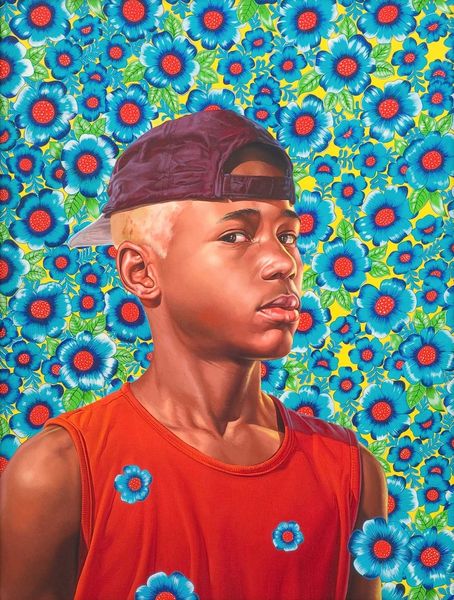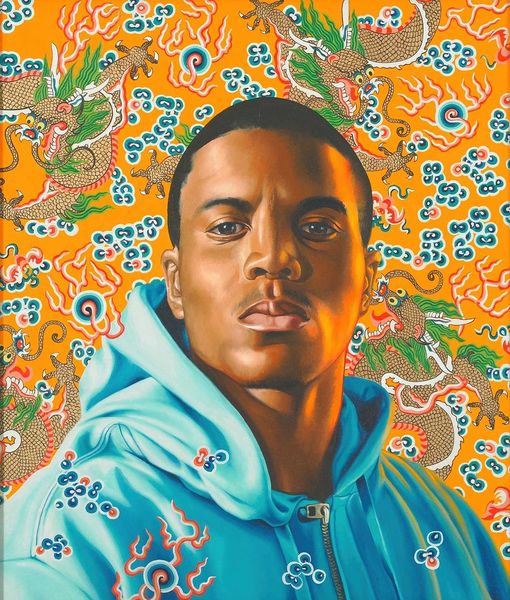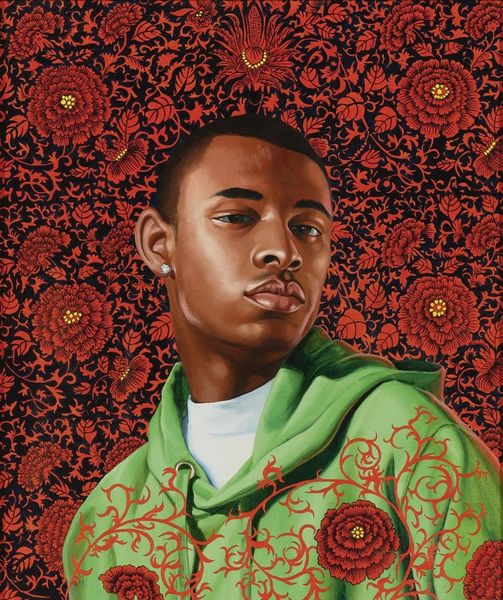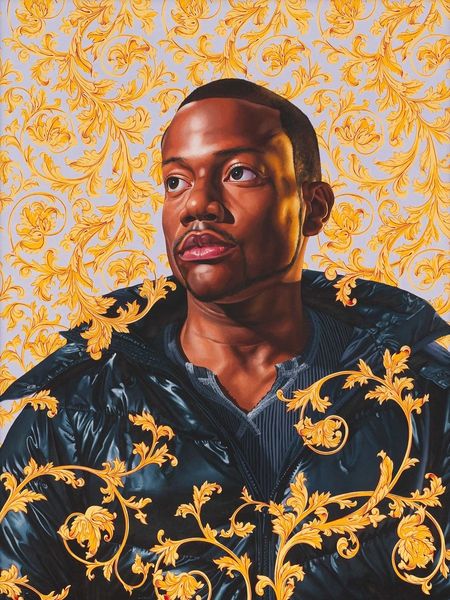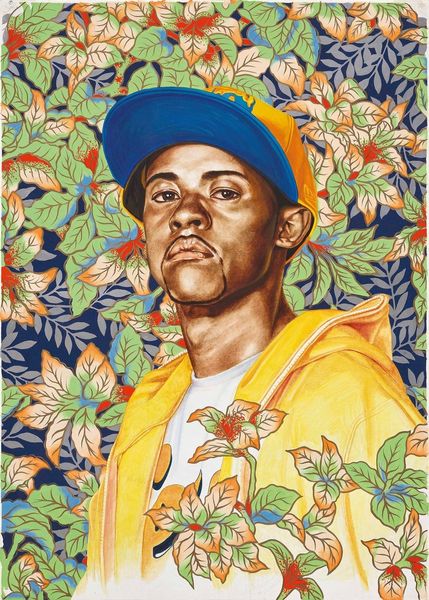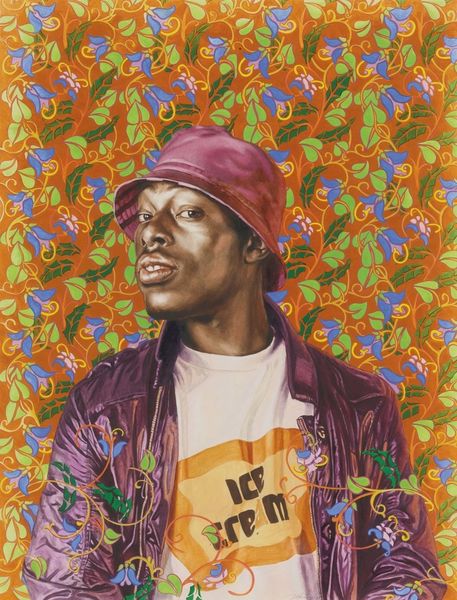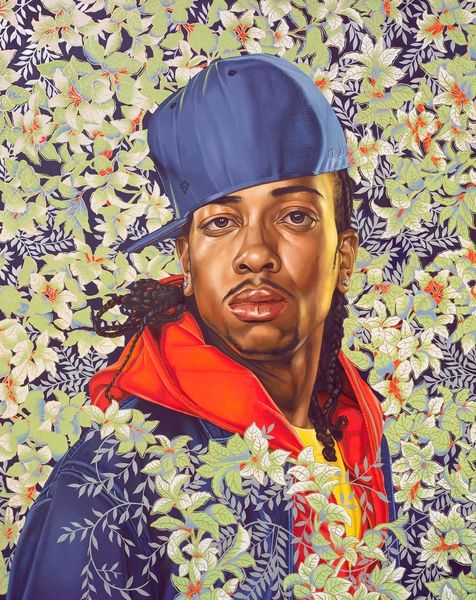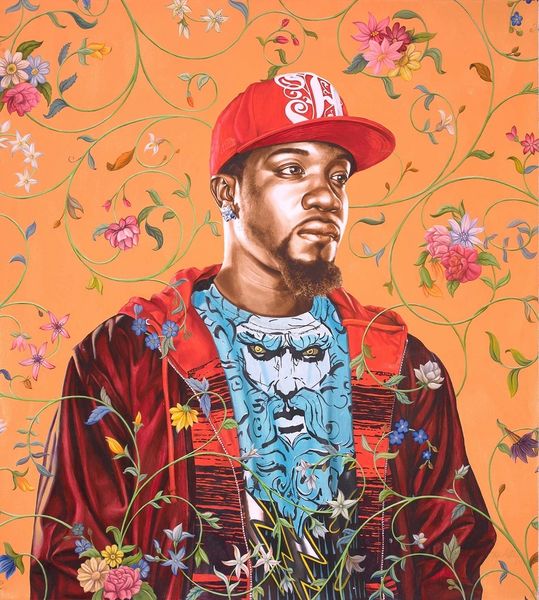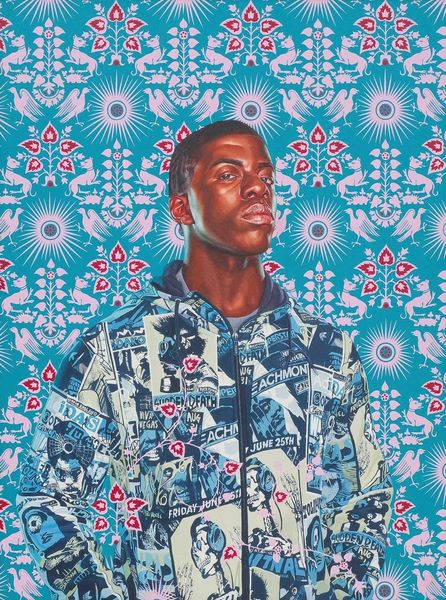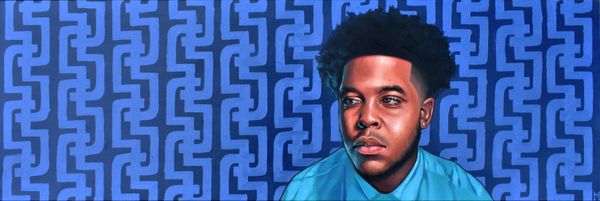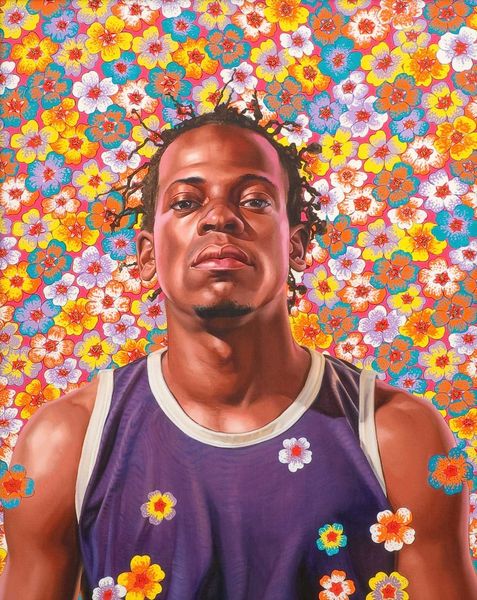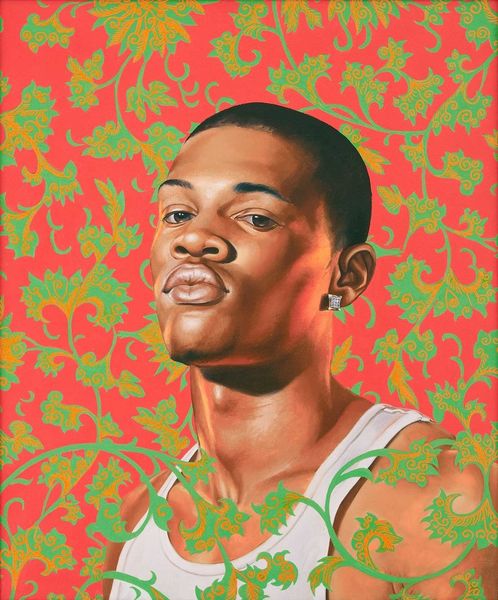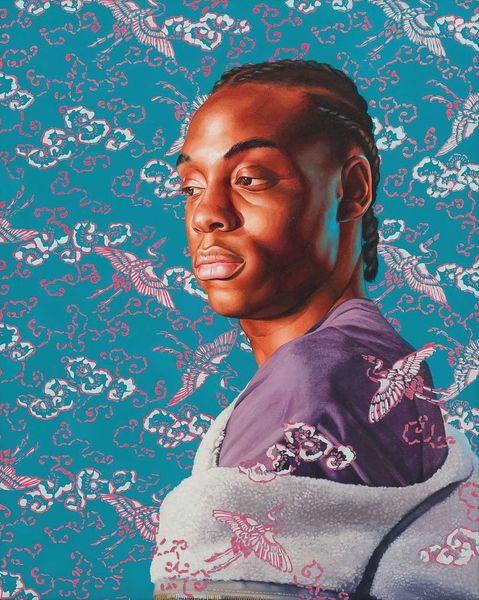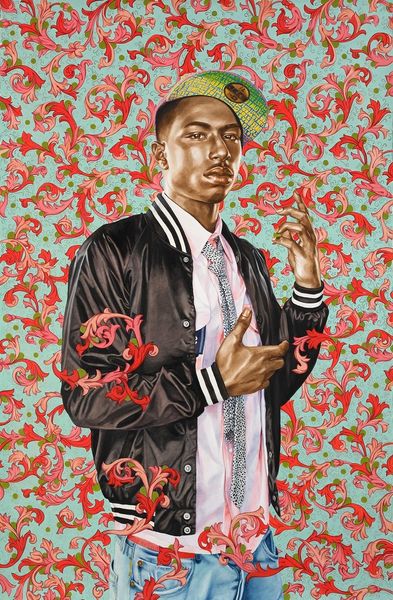
#
pattern-and-decoration
Copyright: Modern Artists: Artvee
Curator: So, let's discuss Kehinde Wiley's 2008 painting, "Jonaton Schimitt Barcellos." What's your immediate take? Editor: Wow, that vibrant green backdrop practically jumps out and slaps you in the face, doesn’t it? It's so...intense! Then you have the portrait, so classical but so… modern. It feels like a visual mixtape. Curator: Precisely! Wiley is well known for placing young Black men in poses reminiscent of classical European portraiture. In this case, it's set against a vivid, almost clashing background, undermining the traditional context. He’s playing with power, visibility, and the politics of representation. Editor: I get that. He’s taking this hyper-masculine pose, something we might associate with wealth or nobility in older paintings, and puts Jonaton in this… what, a pink tank top? It's beautifully painted, but the clothes and the birds in the background...it completely changes the narrative, almost like a reclamation. Is this what contemporary portraiture is about, like flipping history? Curator: Exactly! It prompts viewers to reconsider how art history has traditionally portrayed its subjects. These backgrounds, these clothes are critical. The bold floral and bird patterns—they often reference the subject's heritage. There's a dialogue happening here, about power, identity, and who gets to be seen—and how. Editor: It almost feels like the painting is mocking itself. Like, look how beautiful and polished I am, but also, look at the playful disruption of expectation. There is such beauty with irony that reveals, not diminishes. Curator: That tension is crucial. Wiley engages a lineage of portraiture that historically excluded people of color, and then uses that same style to portray his subjects with dignity and even grandeur. It makes us think about access, power, and what it means to see yourself represented in art. Editor: It’s a bit of a Trojan Horse, isn’t it? Beautiful and familiar, but carrying this radical message inside. Really makes you question everything you’ve ever learned in art history. What I love is the invitation. He demands we think about beauty and class differently, it makes this work sing and live in the viewer’s soul long after one has left its immediate gaze. Curator: It challenges the very notion of a singular historical narrative, doesn't it? A vital conversation. Editor: Absolutely. A very thoughtful visual riot.
Comments
No comments
Be the first to comment and join the conversation on the ultimate creative platform.
